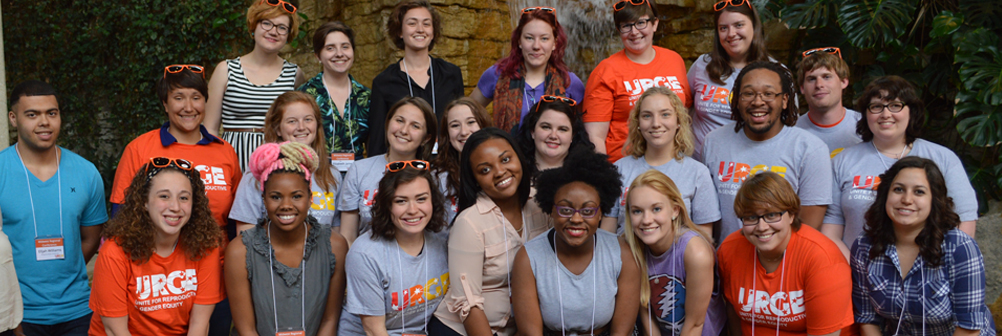To birth or not to birth? We will never have a say.

Posted by Myriam-Fernanda AD
October 29, 2024
How the intersection of forced sterilization and forced birth leaves Latinas at a standstill.
In an attempt to cope with a paradox of forced birth and forced sterilization, there seems to be an impenetrable standstill. Not only are political factors like immigration and access to abortion uniquely affecting Latin migrant populations, but also dangerous cultural and religious rhetoric.
Headlines broke back in 2020 of a whistleblower bringing light to the forced sterilization and malpractice in a private ICE detention center in Georgia. The allegations included everything from negligence to various instances of uninformed consent to medical practices, including hysterectomies. “I don’t think they [immigrant women] really, totally, all the way understand this is what’s going to happen depending on who explains it to them,” said nurse Dawn Wooten.
Around the same time a 17-year-old unnamed migrant asked for an abortion while detained at a government funded center. Not only was she denied the practice, she was taken to a religious “crisis pregnancy center.” The migrant girl was able to obtain an abortion after filing a lawsuit with the ACLU, where more women came forward with similar stories.
Then, the news cycle moved on and these seemingly old instances of reproductive injustice particularly harming Latin American migrants were forgotten. But, I have not forgotten.
There is nothing new about forced sterilization in the U.S. among low income, disabled, people of color and migrant communities. In fact, various states maintain laws allowing for the sterilization of disabled people as recent as 2022. And, in Los Angeles, there was Madrigal v. Quilligan in the 70s. The court ruled in favor of USC Medical Center, claiming that the ten Mexican American women who were coerced into sterilization were victims of language barriers not medical malpractice. From 1930-1970, the U.S. government coerced nearly one-third of women in Puerto Rico into sterilization, stripping them of their bodily autonomy under the guise of population control, which stems directly from the racist eugenics movement.
No where near similar was my own experience where a nurse pushed me more than once to allow the male doctor to oversee optional equipment tests during a breast examination despite my clear no. Or the oversight of a proper vaginal examination and diagnosis for over a year which led to unresolved medical problems. But it shows there is a continual lack of respect for reproductive health, even more so when you are Mexican or of other Latin descent.
Simultaneously, this hesitation and fear of medical care is a danger in itself.
From firsthand experience, there is a learnt level of embarrassment to talk about reproductive health. When my menstrual cycle was late, the first comment was “are you pregnant?” I was 14. Then, there is the Catholic guilt which teaches abstinence above all and anti-choice rhetoric.
Though the intention of abstinence education may be to lower unwanted pregnancy rate, there is no proof of its effectiveness. In most studies, this type of education is seen to have an increase in unwanted pregnancy rates and sexually transmitted diseases. Again, who is making up most of these numbers? Marginalized communities.
“Among heterosexual women, White women were less likely to describe their pregnancies as unwanted compared to Black and Latina women,” according to the National Library of Medicine. So not only is there a continual effort to sterilize marginalized communities, particularly Latin migrants, cultural teaching in these communities at home create an impossible situation for Latina/e people. We are given little to no knowledge on how to navigate consensual safe sex, preventative medication and ultimately unwanted, most of the time forced, pregnancy.
Now how does a post Roe v. Wade world come into play?
In 2023, there was an increase of clinical abortions in every state and self-managed medication abortions accounted for 63% of all abortions in the formal U.S. medical system. Meanwhile, illegal procedures also increased as abortion bans continue to impact millions of Americans, and many fear criminalization.
According to a study from Latina Institute, 6.7 million Latinas, 38% of whom were born outside of the United States, live in a state where abortion is banned or is likely to be banned. At least 1.9 million undocumented female immigrants are trapped in abortion-ban states, following the overturning of Roe V. Wade. The same study found that immigrants face an increased risk of criminalization when seeking abortion care.
The stigma and criminalization around abortion care means that more people worldwide seek out unsafe options, which has led to increased hospitalization and maternal death. Worldwide almost 50% of abortions are unsafe, and in Latin America 3 out of 4 abortions were unsafe.
See this paradox goes past the U.S., it happens on the border, in prison, in Latin homes and across state lines. Not only do governing bodies feel the need to control reproductive rights for marginalized communities, but our own cultural and religious practices grip to a moral high ground that leaves Latin communities with some of the highest unwanted pregnancy rates.
But the headlines will pass and as the election year comes to a close, the topic of abortion will continue to be a generalized blanket not accounting for migrant and other marginalized communities. Will there be a future that centers marginalized communities like Latin American immigrants? Will we push to not settle for anything short of reproductive healthcare access and freedom for all?

